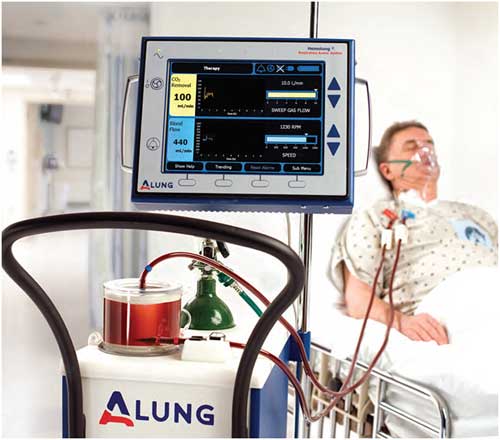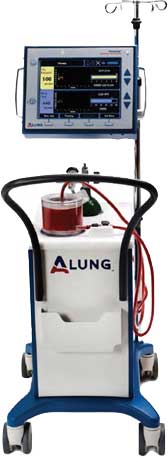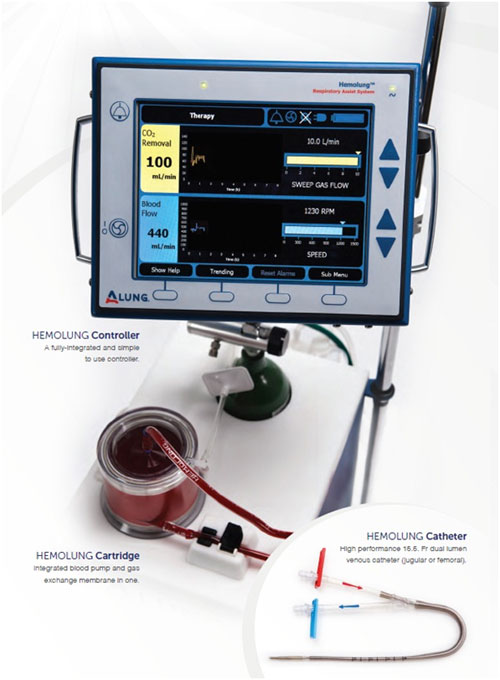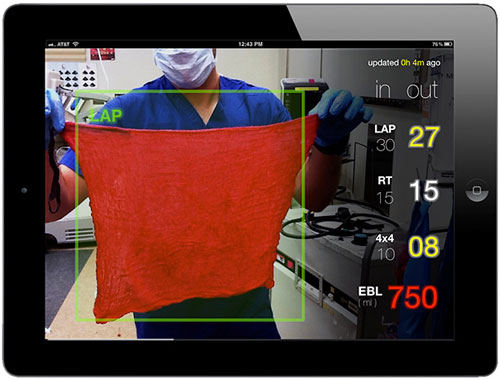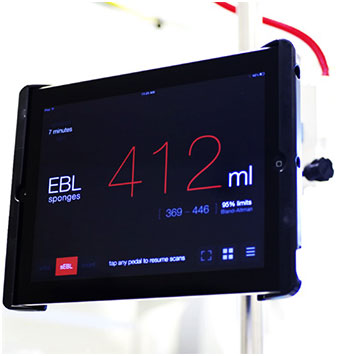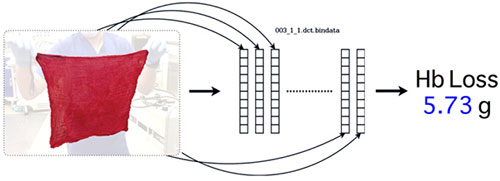| |
Peri-operative management of the surgical patient with diabetes 2015 |
| |
INTRODUCTION: |
| |
Anaesthetists and other peri-operative care providers should be knowledgeable and skilled in the care of patients with diabetes. Management of diabetes is a vital element in the management of surgical patients with diabetes. It is not good enough for the diabetic care to be a secondary, or sometimes forgotten, element of the peri-operative care package
|
| |
The aim is to ensure that diabetes is as well controlled as possible before elective surgery and to avoid delays to surgery due to poor control. The Working Party supports the consensus advice published in the 2011 NHS Diabetes guideline that the HbA1c should be < 69 mmol.mol−1 (8.5%) for elective cases, and that elective surgery should be delayed if it is ≥ 69 mmol.mol−1, while control is improved.
|
| |
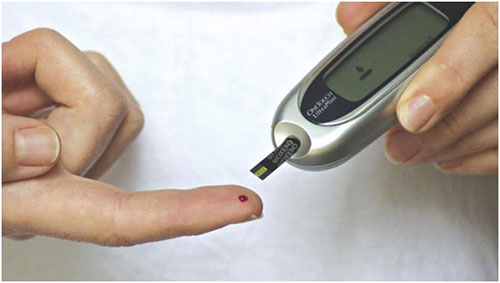 |
| |
Pre-operative assessment |
| |
The adequacy of diabetes control should be assessed again at the time of listing for surgery, ideally with a recorded HbA1c < 69 mmol.mol−1 in the previous three months. If it is ≥ 69 mmol.mol−1, elective surgery should be delayed while control is improved. In a small number of cases it may not be possible to improve diabetic control pre-operatively, particularly if the reason for surgery, such as chronic infection, is contributing to poor control, or if surgery is semi-urgent. In these circumstances, it may be acceptable to proceed with surgery after explanation to the patient of the increased risks.
|
| |
The aim is to minimise the fasting period, ensure normoglycaemia (capillary blood glucose (CBG) 6–10 mmol.l−1) and minimise as far as possible disruption to the patient's usual routine. Ideally, the patient should be booked first on the operating list to minimise the period of fasting. If the fasting period is expected to be limited to one missed meal, the patient can be managed by modification of his/her usual diabetes medication. Patients should be advised to carry a form of glucose that they can take in case of symptoms of hypoglycaemia that will not cause surgery to be cancelled, for example a clear, sugar-containing drink.
|
| |
Management of existing therapy: |
| |
The aim is to avoid hypo- or hyperglycaemia during the period of fasting and the time during and after the procedure, until the patient is eating and drinking normally. In people who are likely to miss one meal only, this can often be achieved by manipulating the patient's normal medication.
|
| |
| Guideline for peri-operative adjustment of insulin (short starvation period – no more than one missed meal) |
| Insulin |
Day before admission | Day of surgery |
Whilst a VRIII is being useda |
| Surgery in the morning | Surgery in the afternoon |
| Once daily (e.g. Lantus®, Levemir®, Tresiba®, Insulatard®, Humulin I®, Insuman®) |
| Evening |
Reduce dose by 20% | Check blood glucose on admission | Check blood glucose on admission | Continue at 80% of usual dose |
| Morning |
Reduce dose by 20% | Reduce dose by 20%; check blood glucose on admission | Reduce dose by 20%; check blood glucose on admission
| Continue at 80% of usual dose |
Twice daily |
| Biphasic or ultra-long acting (e.g. Novomix 30®, Humulin M3®, Humalog Mix 25®, Humalog Mix 50®, Insuman® Comb 25, Insuman® Comb 50, Levemir®, Lantus®) by single injection, given twice daily |
No dose change | Halve the usual morning dose; check blood glucose on admission; leave evening meal dose unchanged
| Halve the usual morning dose; check blood glucose on admission; leave the evening meal dose unchanged | Stop until eating and drinking normally |
| Short-acting (e.g. animal neutral, Novorapid®, Humulin S®, Apidra®) and intermediate-acting (e.g. animal isophane, Insulatard®, Humulin I®, Insuman®) by separate injections, both given twice daily |
No dose change | Calculate total dose of morning insulin(s); give half as intermediate-acting only in the morning; check blood glucose on admission; leave evening meal dose unchanged.
| Calculate total dose of morning insulin(s); give half as intermediate-acting only in the morning; check blood glucose on admission; leave evening meal dose unchanged | Stop until eating and drinking normally |
Three to five injections daily |
| |
No dose change | Basal bolus regimens:
Omit morning and lunchtime short-acting insulins; keep basal unchangeda
Premixed morning insulin:
Halve morning dose and omit lunchtime dose; check blood glucose on admission | Give usual morning insulin dose(s); omit lunchtime dose; check blood glucose on admission | Stop until eating and drinking normally |
|
| |
a If the patient requires a VRIII then the long-acting background insulin should be continued but at 80% of the dose the patient usually takes when he/she is well.
|
| |
VRIII, variable-rate intravenous insulin infusion.
|
| |
| Guideline for peri-operative adjustment of oral hypoglycaemic agents (short starvation period – no more than one missed meal) |
| Agent | Day before admission | Day of surgery | Whilst a VRIII is being used |
| Surgery in the morning |
Surgery in the afternoon |
| Drugs that require omission when fasting owing to risk of hypoglycaemia |
| Meglitinides (e.g. repaglinide, nateglinide) | Take as normal | Omit morning dose if nil by mouth | Give morning dose if eating | Stop until eating and drinking normally |
| Sulphonylurea (e.g. glibenclamide, gliclazide, glipizide) | Take as normal | Omit morning dose (whether taking once or twice daily) | Omit (whether taking once or twice daily) | Stop until eating and drinking normally |
| Drugs that require omission when fasting owing to risk of ketoacidosis |
| SGLT-2 inhibitorsa (e.g. dapagliflozin, canagliflozin) |
No dose change | Halve the usual morning dose; check blood glucose on admission; leave evening meal dose unchanged | Halve the usual morning dose; check blood glucose on admission; leave the evening meal dose unchanged | Stop until eating and drinking normally |
| Drugs that may be continued when fasting |
| Acarbose |
Take as normal | Omit morning dose if nil by mouth | Give morning dose if eating | Stop until eating and drinking normally |
| DPP-IV inhibitors (e.g. sitagliptin, vildagliptin, saxagliptin, alogliptin, linagliptin) |
Take as normal | Take as normal | Take as normal | Stop until eating and drinking normally |
| GLP-1 analogues (e.g. exenatide, liraglutide, lixisenatide) | Take as normal | Take as normal | Take as normal | Take as normal |
| Metformin (procedure not requiring use of contrast mediab )
| Take as normal | Take as normal | Take as normal | Stop until eating and drinking normally |
| Pioglitazone | Take as normal | Take as normal | Take as normal | Stop until eating and drinking normally |
|
| |
a Also omit the day after surgery.
|
| |
b If contrast medium is to be used or the estimated glomerular filtration rate is under 60 ml.min−1.1.73 m−2, metformin should be omitted on the day of the procedure and for the following 48 h.
|
| |
VRIII, variable-rate intravenous insulin infusion; SGLT-2, sodium-glucose co-transporter-2; DPP-IV, dipeptidyl peptidase-IV; GLP-1, glucagon-like peptide-1.
|
| |
Some agents (e.g. sulphonylureas, meglitinides, insulin and to some extent, thiazolidinediones) act by lowering glucose concentrations, and doses need to be modified or the agents stopped during periods of starvation. Others work by preventing glucose levels from rising (e.g. metformin, glucagon-like peptide-1 analogues, dipeptidyl peptidase-4 inhibitors); these drugs may be continued without the risk of hypoglycaemia. The time of day and the expected duration of the operation need to be considered, as will whether a VRIII will be needed. Patients with continuous subcutaneous insulin infusions only missing one meal should be advised to maintain their CBG at 6–10 mmol.l−1. If longer periods of starvation are predicted, a VRIII should be used and specialist advice sought.
|
| |
Use of a variable-rate intravenous insulin infusion: |
| |
Variable-rate intravenous insulin infusions are preferred in: patients who will miss more than one meal; those with type-1 diabetes undergoing surgery who have not received background insulin; those with poorly controlled diabetes (defined as a HbA1c > 69 mmol.mol−1); and most patients with diabetes requiring emergency surgery. An example of a VRIII regimen:
|
| |
|
| |
Example of a variable-rate intravenous insulin infusion prescription. Glucose concentration is usually measured in capillary blood |
| |
|
| |
| Glucose concentration; mmol.l−1 |
Standard rate (use unless otherwise indicated) |
Reduced rate (e.g. insulin-sensitive patients (i.e. < 24 IU.day−1)) |
Increased rate (e.g. insulin-resistant patients (i.e. > 100 IU.day−1)) |
| No basal insulin | Basal insulin continued | No basal insulin | Basal insulin continued | No basal insulin | Basal insulin continued |
| < 4 | 0.5 IU.h−1 + give 100 ml glucose 20% intravenously | STOP + give 100 ml glucose 20% intravenously | 0.2 IU.h−1 + give 100 ml glucose 20% intravenously | STOP + give 100 ml glucose 20% intravenously | 0.5 IU.h−1 + give 100 ml glucose 20% intravenously | STOP + give 100 ml glucose 20% intravenously |
| 4.1–6.0 | 0.5 IU.h−1 + consider 50 ml glucose 20% intravenously | STOP + consider 50 ml glucose 20% intravenously | 0.2 IU.h−1 + give 50 ml glucose 20% intravenously | STOP + consider 50 ml glucose 20% intravenously | 0.5 IU.h−1 + give 50 ml glucose 20% intravenously | STOP + consider 50 ml glucose 20% intravenously |
| 6.1–8.0 | 1 IU.h−1 | 1 IU.h−1 | 0.5 IU.h−1 | 0.5 IU.h−1 | 2 IU.h−1 | 2 IU.h−1 |
| 8.1–12.0 | 2 IU.h−1 | 2 IU.h−1 | 1 IU.h−1 | 1 IU.h−1 | 4 IU.h−1 | 4 IU.h−1 |
| 12.1–16.0 | 4 IU.h−1 | 4 IU.h−1 | 2 IU.h−1 | 2 IU.h−1 | 6 IU.h−1 | 6 IU.h−1 |
| 16.1–20.0 | 5 IU.h−1 | 5 IU.h−1 | 3 IU.h−1 | 3 IU.h−1 | 7 IU.h−1 | 7 IU.h−1 |
| 20.1–24.0 | 6 IU.h−1 | 6 IU.h−1 | 4 IU.h−1 | 4 IU.h−1 | 8 IU.h−1 | 8 IU.h−1 |
| > 24.1 | 8 IU.h−1 | 8 IU.h−1 | 6 IU.h−1 | 6 IU.h−1 | 10 IU.h−1 | 10 IU.h−1 |
| > 24.1 | Ensure insulin is running and that the measured blood glucose concentration is not artefactual |
|
| |
Intra-operative care and monitoring: |
| |
An intra-operative CBG range of 6–10 mmol.l−1 should be aimed for (an upper limit of 12 mmol.l−1 may be tolerated at times, e.g. if the patient has poorly controlled diabetes and is being managed by a modification of his/her normal medication without a VRIII). It should be understood by all staff that a CBG within the range of 6–10 mmol.l−1 is acceptable and that there is no requirment for a CBG of 6 mmol.l−1 to be the target. The CBG should be checked before induction of anaesthesia and monitored regularly during the procedure (at least hourly, or more frequently if the results are outside the target range).
|
| |
Management of intra-operative hyperglycaemia and hypoglycaemia: |
| |
If the CBG exceeds 12 mmol.l−1 and insulin has been omitted, capillary blood ketone levels should be measured if possible (point-of-care devices are available). If the capillary blood ketones are > 3 mmol.l−1 or there is significant ketonuria (> 2+ on urine sticks) the patient should be treated as having diabetic ketoacidosis (DKA). Diabetic ketoacidosis is a triad of ketonaemia > 3.0 mmol.l−1, blood glucose > 11.0 mmol.l−1, and bicarbonate < 15.0 mmol.l−1 or venous pH < 7.3. Diabetic ketoacidosis is a medical emergency and specialist help should be obtained from the diabetes team.
|
| |
If DKA is not present, the high blood glucose should be corrected using subcutaneous insulin or by altering the rate of the VRIII (if in use). If two subcutaneous insulin doses do not work, a VRIII should be started. |
| |
Treatment of hyperglycaemia in a patient with type-1 diabetes |
| |
Subcutaneous rapid-acting insulin (such as Novorapid®, Humalog® or Apidra®) should be given (up to a maximum of 6 IU), using a specific insulin syringe, assuming that 1 IU will drop the CBG by 3 mmol.l−1 The CBG should be checked hourly and a second dose considered only after 2 h.
|
| |
Treatment of hyperglycaemia in a patient with type-2 diabetes |
| |
Subcutaneous rapid-acting insulin 0.1 IU.kg−1 should be given (up to a maximum of 6 IU), using a specific insulin syringe. The CBG should be checked hourly and a second dose considered only after 2 h. A VRIII should be considered if the patient remains hyperglycaemic.
|
| |
Treatment of intra-operative hypoglycaemia |
| |
For a CBG 4.0–6.0 mmol.l−1, 50 ml glucose 20% (10 g) should be given intravenously; for hypoglycaemia < 4.0 mmol.l−1 a dose of 100 ml (20 g) should be given.
|
| |
Fluid management: |
| |
It is now recognised that Hartmann's solution is safe to administer to patients with diabetes and does not contribute to clinically significant hyperglycaemia.
|
| |
Fluid management for patients requiring a VRIII |
| |
The aim is to provide glucose as a substrate to prevent proteolysis, lipolysis and ketogenesis, as well as to optimise intravascular volume status and maintain plasma electrolytes within the normal range. It is important to avoid iatrogenic hyponatraemia from the administration of hypotonic solutions. Glucose 5% solution should be avoided. Use of glucose 4% in 0.18% saline can be associated with hyponatraemia.
|
| |
The substrate solution to be used should be based on the patient's current electrolyte concentrations. While there is no clear evidence that one type of balanced crystalloid fluid is better than another, half-strength ‘normal’ saline combined with glucose is, theoretically, a reasonable compromise to achieve these aims. Thus, the initial fluid should be glucose 5% in saline 0.45% pre-mixed with either potassium chloride 0.15% (20 mmol.l−1) or potassium chloride 0.3% (40 mmol.l−1), depending on the presence of hypokalaemia (< 3.5 mmol.l−1).
|
| |
Fluid should be administered at the rate that is appropriate for the patient's usual maintenance requirements – usually 25–50 ml.kg−1.day−1 (approximately 83 ml.h−1 for a 70-kg patient)
|
| |
Very occasionally, the patient may develop hyponatraemia without signs of fluid overload. In these circumstances, it is acceptable to prescribe one of the following solutions as the substrate solution: glucose 5% in saline 0.9% with pre-mixed potassium chloride 0.15% (20 mmol.l−1); or glucose 5% in saline 0.9% with pre-mixed potassium chloride 0.3% (40 mmol.l−1)
|
| |
Additional Hartmann's solution or another balanced isotonic crystalloid solution should be used to optimise intravascular volume status.
|
| |
Fluid management for patients not requiring a VRIII |
| |
The aim is to avoid glucose-containing solutions unless the blood glucose is low. It is important to avoid hyperchloraemic metabolic acidosis; Hartmann's solution should be administered to optimise the intravascular volume status. If the patient requires prolonged postoperative fluids (> 24 h), a VRIII should be considered and glucose 5% in saline 0.45% with pre-mixed potassium chloride given as above.
|
| |
Anaesthetic considerations |
| |
Use of dexamethasone |
| |
Dexamethasone can lead to hyperglycaemia and should be used with caution in patients with diabetes. If it is decided that the possible benefits of earlier resumption of normal diet outweigh the disadvantages of hyperglycaemia, it should be ensured that the CBG is measured hourly for at least 4 h after administration.
|
| |
Use of regional anaesthesia |
| |
Local anaesthetic techniques, when used as the sole anaesthetic, reduce the risk of postoperative nausea and vomiting. However, evidence suggests that patients with diabetes are more prone to epidural abscesses and haemodynamic instability after central neuraxial blockade (in patients with an autonomic neuropathy), and, possibly, increased risk of neuropathy after peripheral nerve blocks.
|
| |
Patients with diabetes requiring emergency surgery: |
| |
There are three ways of managing diabetes in the patient requiring emergency surgery: |
| |
 |
Modification of normal medication. This is only possible if the patient is physiologically well and is being operated on a scheduled list, for example a regular trauma list for minor hand surgery, or evacuation of retained products of conception on a regular gynaecology list. |
 |
Use of a VRIII. This should be the default technique to manage a patient undergoing emergency surgery because of the unpredictability of the starvation period caused by the erratic nature of emergency lists. |
 |
Use of a fixed-rate intravenous insulin infusion (see below). This should only be used if the patient requires immediate surgery and has concurrent DKA.
|
|
| |
The aim is for the patient to be taken to the operating theatre with a CBG of 6–10 mmol.l−1 (6–12 mmol.l−1 may be acceptable), without overt DKA, and having been adequately resuscitated. |
| |
In patients undergoing emergency surgery, the CBG should be checked regularly (hourly as a minimum whilst acutely unwell), and a VRIII established using dextrose 5% in saline 0.45% with pre-mixed potassium chloride as the substrate. |
| |
The patient should be checked for ketonaemia (> 3.0 mmol.l−1) or significant ketonuria (> 2+ on urine sticks) if the CBG exceeds 12 mmol.l−1. If the patient has DKA and requires emergency surgery, the involvement of senior multidisciplinary input from intensivists, anaesthetists, surgeons and diabetologists should be considered to agree optimal peri-operative management. Operating on a patient with DKA carries significant mortality and should be avoided if at all possible. |
| |
Note: Formula for calculation of mg/dl from mmol/l: |
| |
mg/dl = 18 × mmol/l |
| |
Source: |
| |
Peri-operative management of the surgical patient with diabetes 2015.
Anaesthesia, Volume 70, Issue 12, pages 1427–1440, December 2015
|
